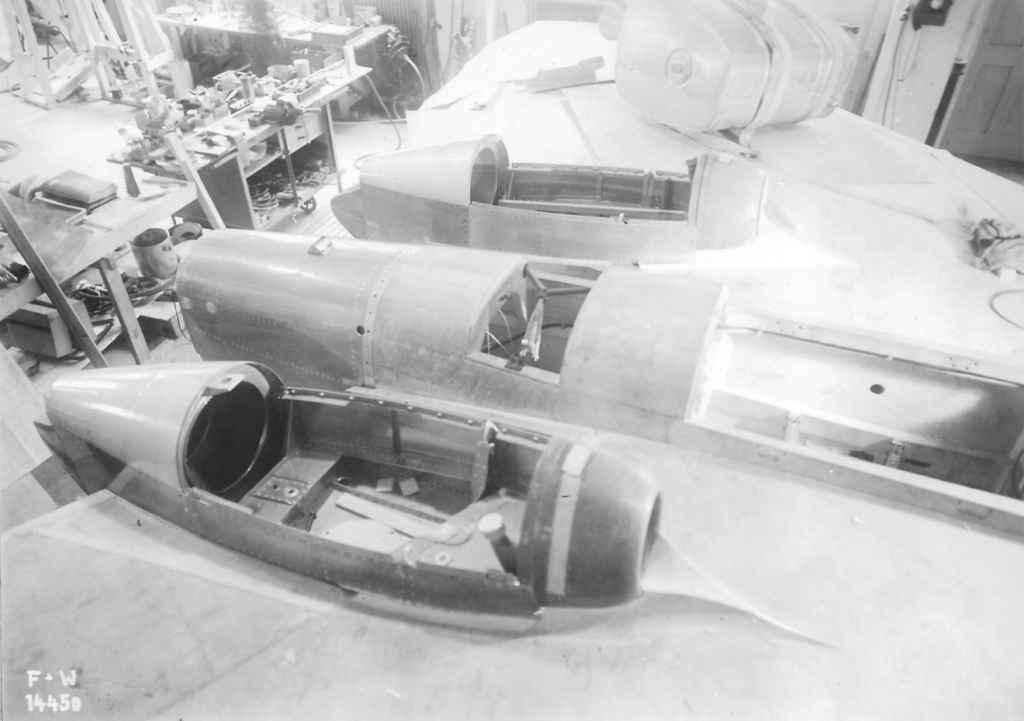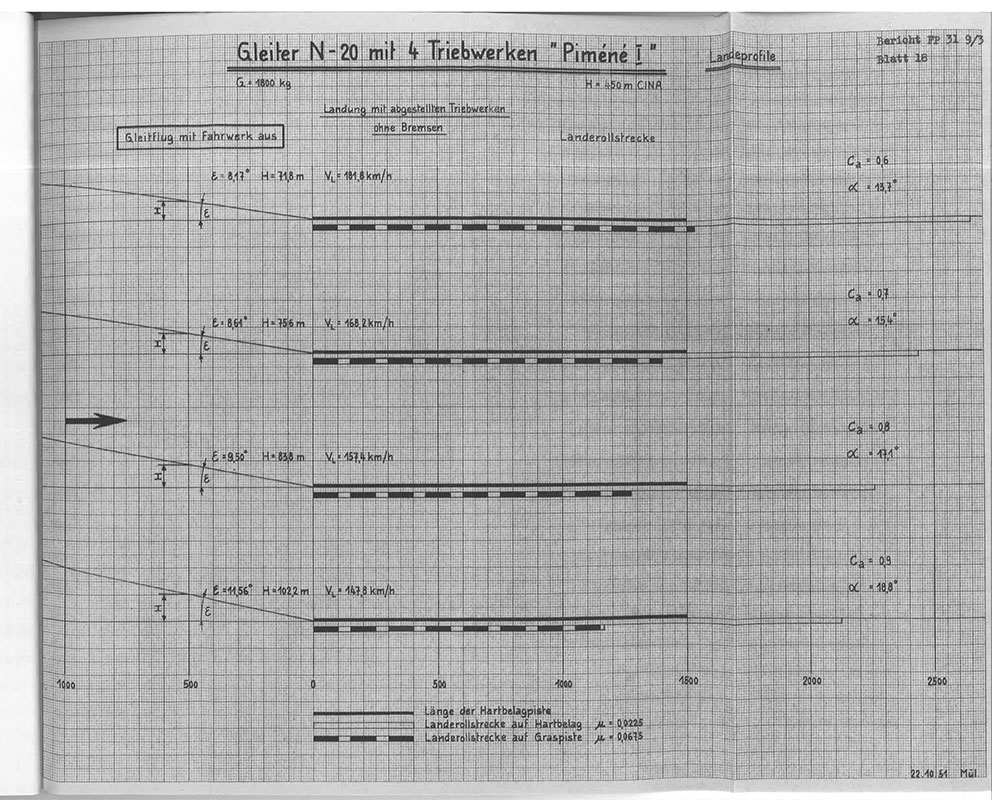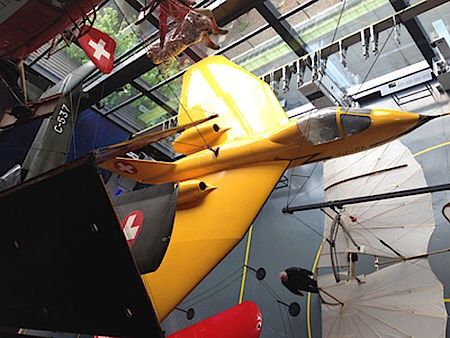Development, construction and flight testing of the N-20.2 Arbalète
The basic construction of the aircraft was to be identical to the N-20.1 glider. With some alterations:
– No slats
– No trim flaps
– No canard wings
– No solid rocket motor
– No towing attachments
– Observer seat replaced by fuel tank
– Main landingear wheels replaced by Dunlop wheels and disk brakes
– Modified canopy geometry
– Aileron compensation through rudder tab
– Flight control wires replaced by control rods
– dihydral of outer wing sections deleted




The installation of the jet engines in the wood structure was a challenge for itself. Heat dissipation under the very tightly designed cowling needed some extra engineering.
The fuel tank was a welded aluman construction. It contained 235 Liter fuel and was installed in the fuselage mid section between the wing spars.
The cockpit was widened by 20mm and received a revised canopy.
The four engine throttles were positioned on the left hand side and the elevon trim wheel on the right hand side.
The rudder controls are linked through control rods to a chain drive, which diverts the control cables to the left fuselage side.




Test pilot Mathez stated that the aircraft has nicely balanced elevon controls but only very little rudder pressure. Further more the synchronisation of the four engines is demanding.
During the follwing 91 test flights a total of 33hrs and 27min was accumulated. The aircarft was taken through full aerobatics and reached its maximum speed of 387kts.
All pilots certifed the flight performance and handling characteristics as outstanding.
Unfortunately the original flight protocolls are missing.
Die Erprobung erstreckte sich im Geschwindigkeitsbereich 137 km/h (Abkippen) ≤ Va ≤ 650km/h (entspricht Veff = 720 km/h). Hervorzuheben ist, dass nach einer Totalflugzeit von ca. 10 Stunden die Reglage des Flugzeuges soweit durchgeführt war, dass von Piloten keine Beanstandungen mehr erfolgten. Ebenfalls bis zu diesem Zeitpunkt war die Erprobung so weit gediehen, dass ein vollständiges Akrobatikprogramm geflogen werden konnte. Die Beurteilung durch die Piloten war über Erwarten günstig. Hervorgehoben wurde die grosse Wendigkeit, rasche und genaue Wirksamkeit der Steuerung bei kleinen und gut abgeglichenen Steuerkräften. Knstflugfiguren konnten mühelos und präzis geflogen werden. Das Stabilitätsverhalten wurde ebenfalls als gut und angenehm taxiert.
Start und Landungen waren mit keinen besonderen Schwierigkeiten verbunden. Die erflogenen Leistungen waren durchwegs besser, als aufgrund von Windkanalmessungen und diversen aerodynamischen Untersuchungen voraus bestimmt waren.

The Arbalète was last flown on 20.Mai 1054. Which is well past the date of the cancellation of the entire project in 1953.
The original aircraft was on prominent display for many years at the Verkehrshaus Luzern. It was transfered to Dübendorf in 2019 and is on display at the Fliegermuseum today.